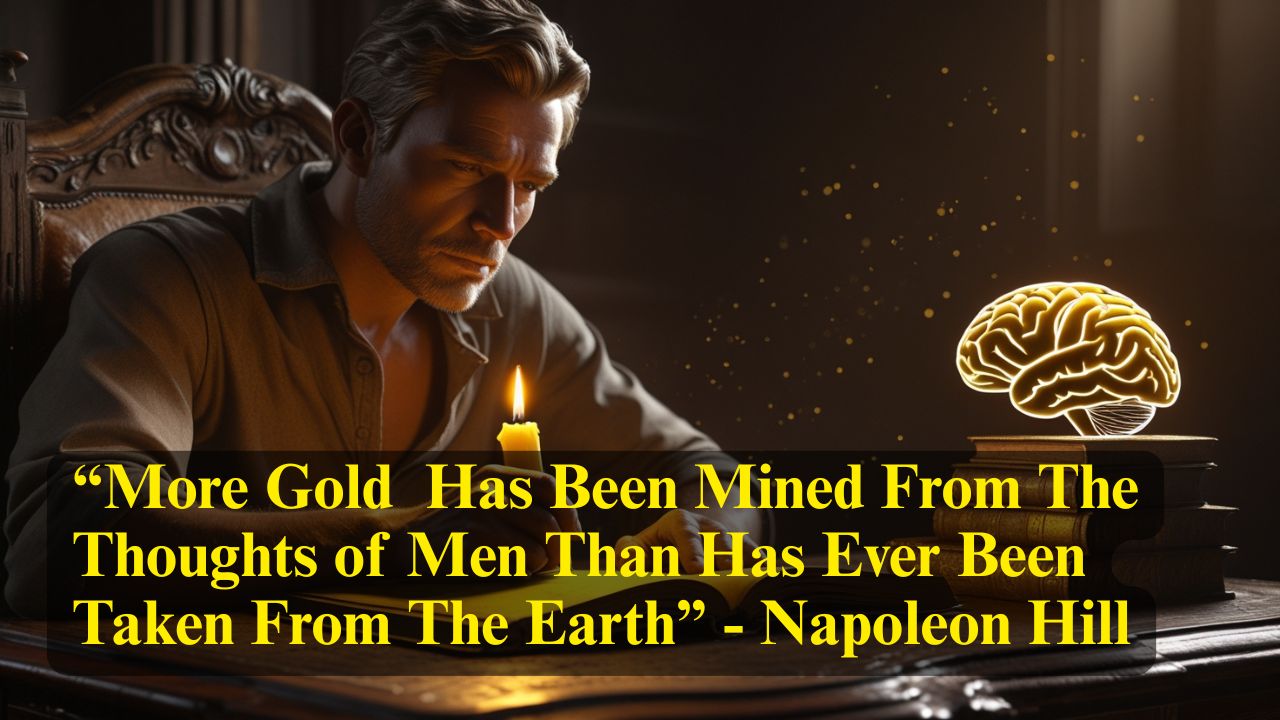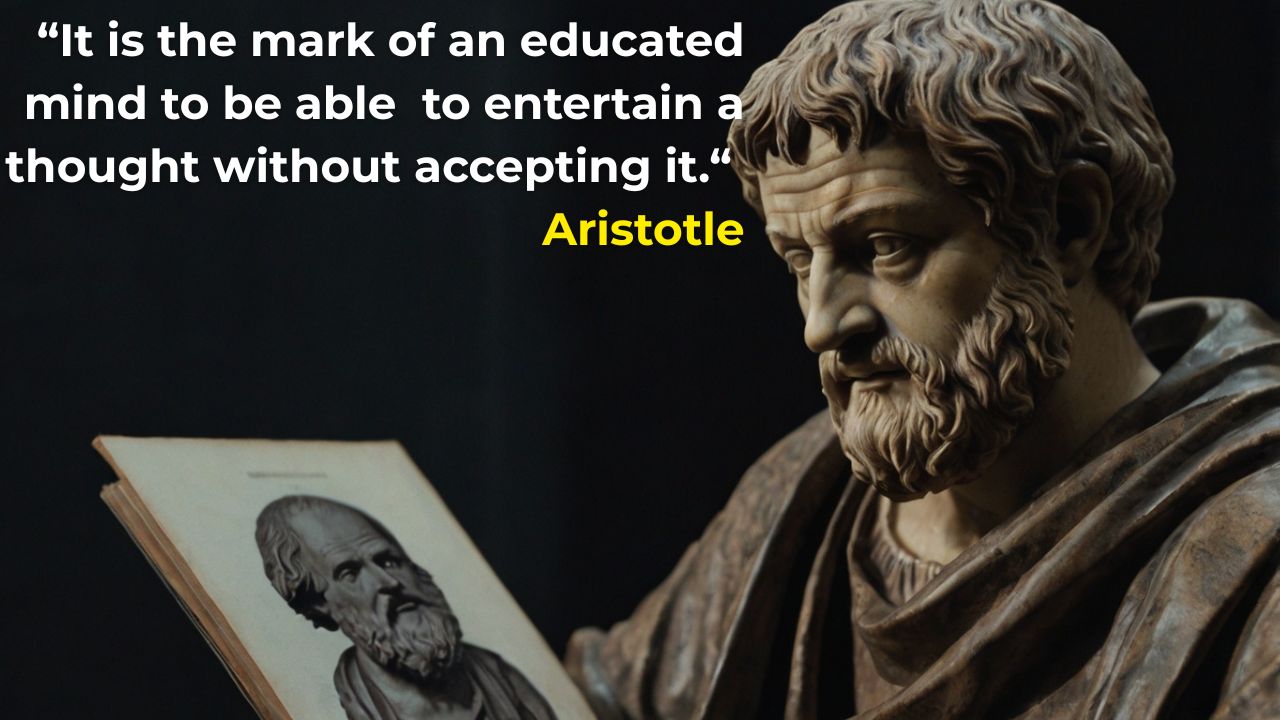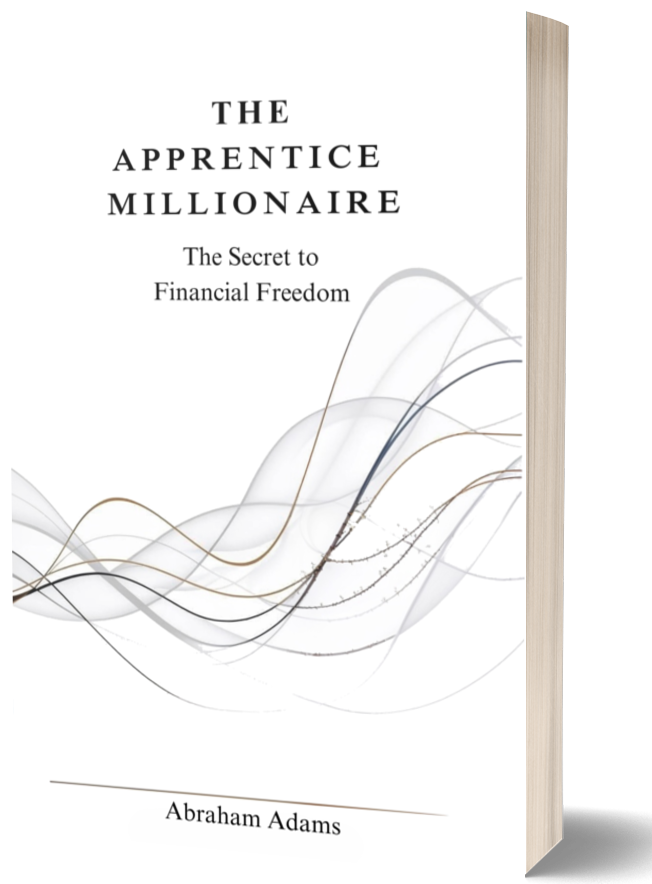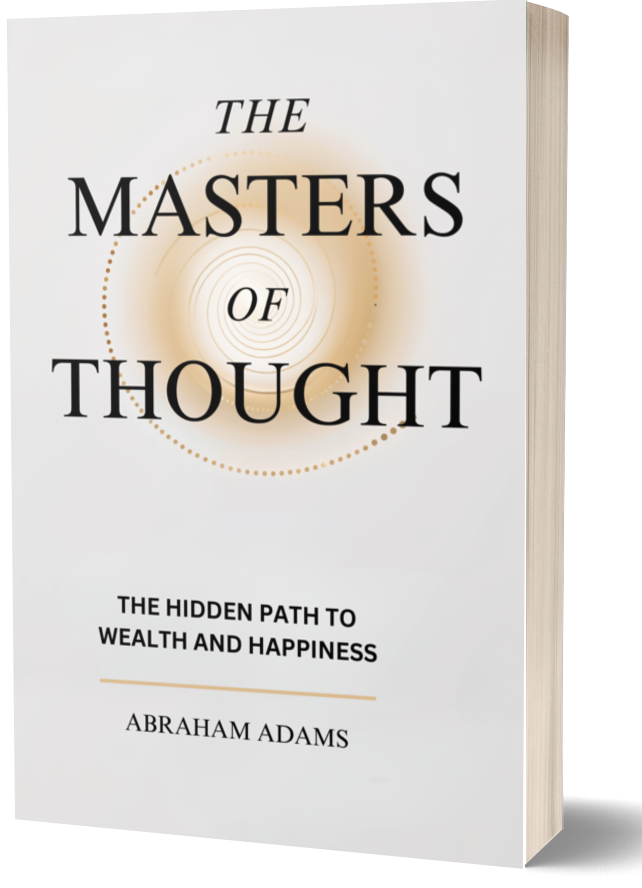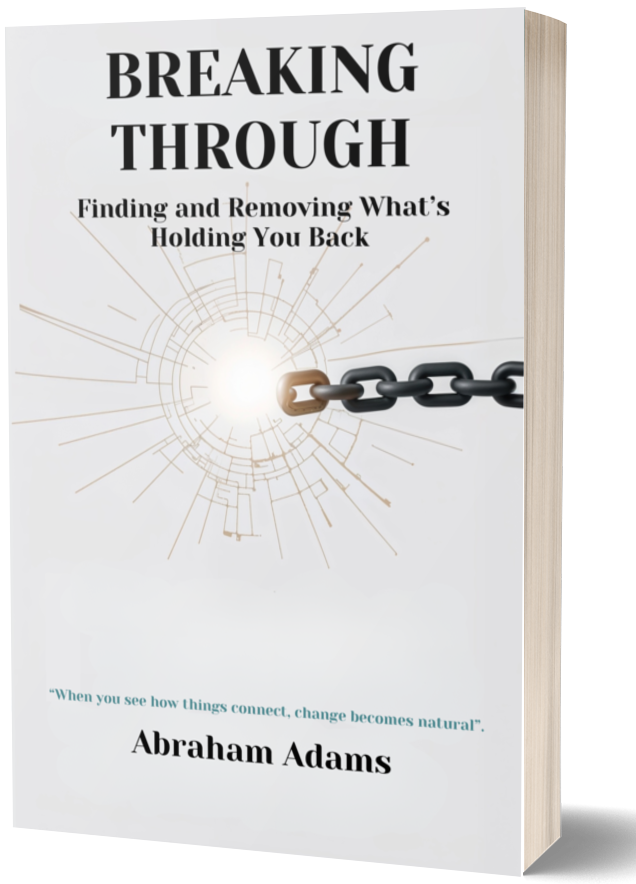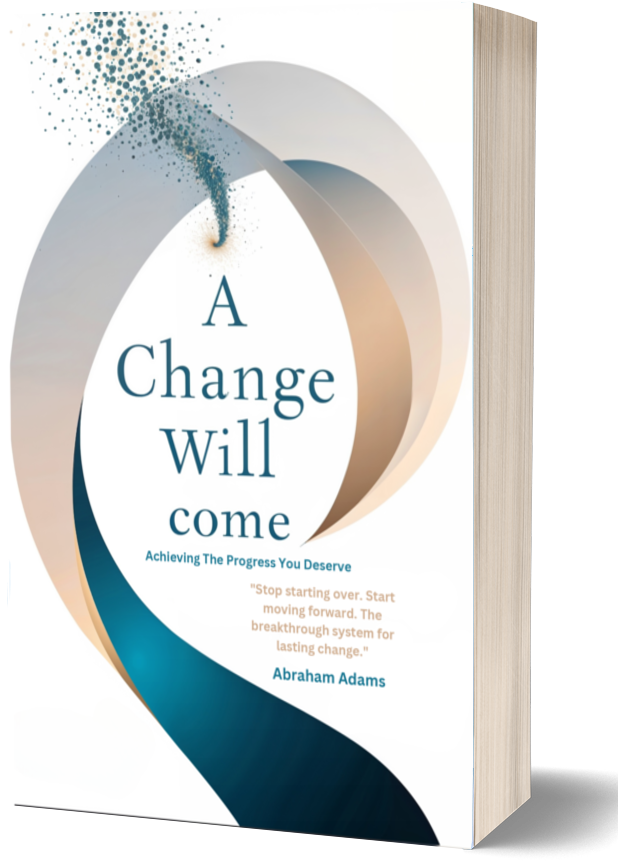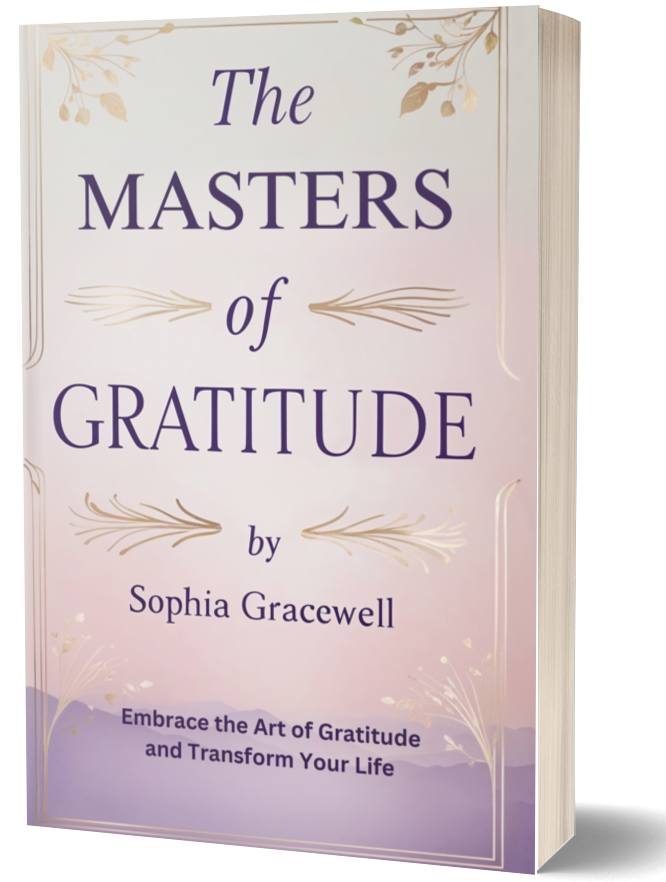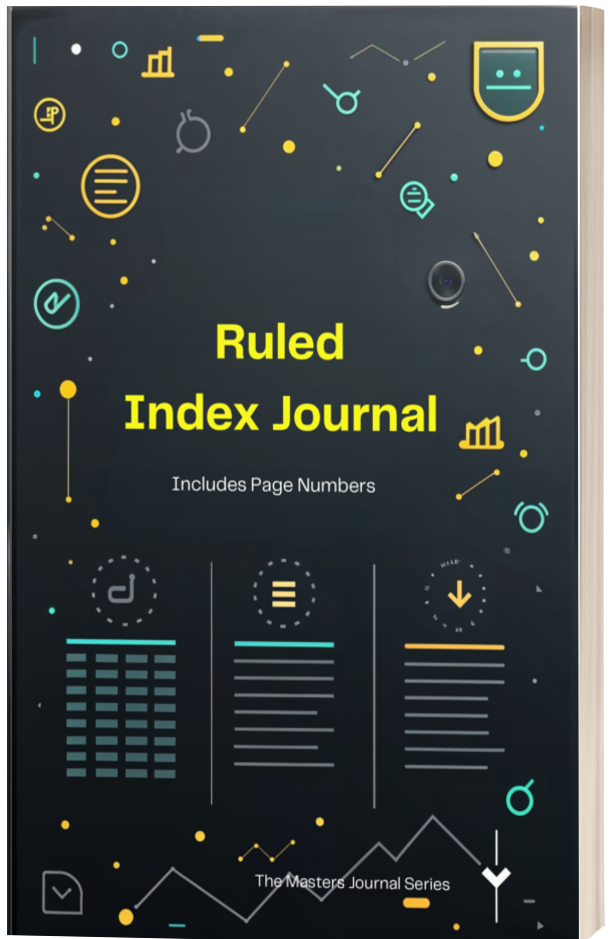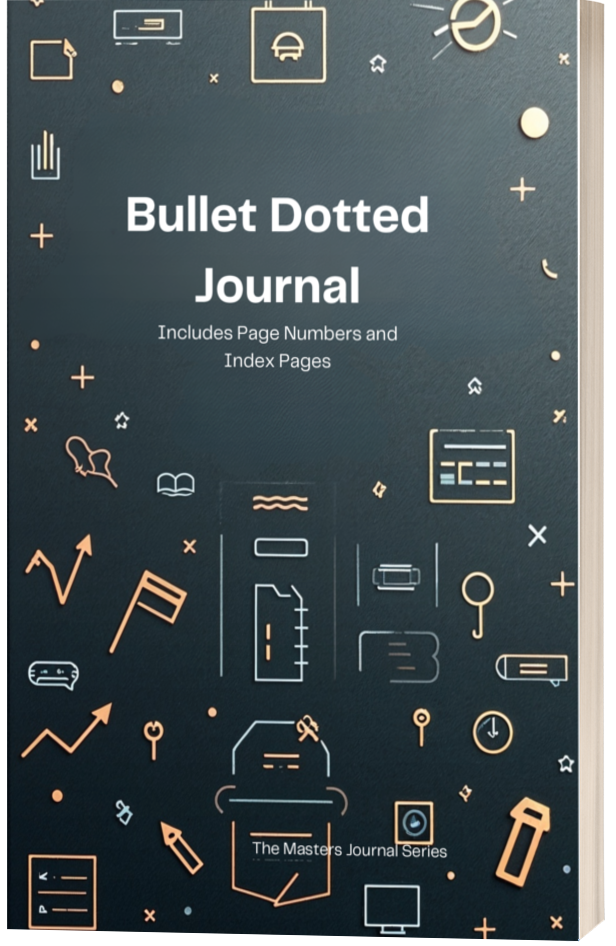Super User
Understanding Procrastination: The Hidden Psychology Behind Delay
Understanding Procrastination: The Hidden Psychology Behind Delay
Procrastination isn't just about being lazy or lacking willpower. It's a complex psychological phenomenon that affects nearly everyone at some point in their lives. Understanding the true nature of procrastination is the first step toward conquering it.
What Procrastination Really Is
Procrastination is the act of voluntarily delaying or postponing tasks despite knowing that this delay may lead to negative consequences. It's not simply poor time management or laziness—it's an active process where we choose to do something else instead of the task we know we should be doing.
Research shows that procrastination is fundamentally about emotion regulation, not time management. When we procrastinate, we're trying to avoid the negative emotions associated with a task, such as anxiety, boredom, frustration, or fear of failure.
The Procrastination Paradox
Here's the cruel irony: while procrastination provides temporary relief from negative emotions, it ultimately creates more stress, anxiety, and negative feelings. We end up in a cycle where the very thing we're trying to avoid—negative emotions—becomes amplified.
This creates what psychologists call the "procrastination paradox." We delay tasks to feel better in the moment, but this delay makes us feel worse in the long run, leading to more procrastination.
The Neuroscience Behind Procrastination
Your brain plays a significant role in procrastination. The limbic system, which controls emotions and seeks immediate gratification, often overrides the prefrontal cortex, which is responsible for planning and decision-making.
When faced with a task that triggers negative emotions, your limbic system activates your fight-or-flight response. Since you can't literally run away from a work project or academic assignment, your brain chooses the next best thing: avoidance through procrastination.
Types of Procrastinators
- The Perfectionist: Delays starting because they fear their work won't meet impossibly high standards. They'd rather not try than risk producing something imperfect.
- The Dreamer: Has great ideas but struggles with the practical steps needed to implement them. They get stuck in the planning phase and never move to action.
- The Worrier: Becomes paralyzed by fear of failure or judgment. They spend more time worrying about potential problems than actually working on solutions.
- The Crisis-Maker: Thrives on the adrenaline rush of last-minute work. They believe they work better under pressure and deliberately delay tasks to create urgency.
- The Overdoer: Takes on too many commitments and uses busy work to avoid important but challenging tasks.
The Hidden Costs of Procrastination
Procrastination affects more than just productivity. It impacts:
- Physical health: Chronic procrastination is linked to higher stress levels, weakened immune systems, and sleep problems.
- Mental health: Increased anxiety, depression, and feelings of guilt and shame.
- Relationships: Missed deadlines and broken promises can strain personal and professional relationships.
- Career growth: Delayed projects and missed opportunities can limit professional advancement.
- Self-esteem: Repeated cycles of procrastination and regret erode confidence and self-worth.
Breaking the Stigma
One of the biggest barriers to overcoming procrastination is the shame and self-judgment that often accompanies it. Many people view procrastination as a character flaw or moral failing, leading to harsh self-criticism that only makes the problem worse.
Understanding that procrastination is a common human experience—not a personal defect—is crucial for developing compassion toward yourself and creating the psychological safety needed for change.
Moving Forward
Recognizing procrastination as an emotional regulation strategy rather than a time management problem opens the door to more effective solutions. Instead of simply trying to force yourself to work harder, you can address the underlying emotions and thoughts that drive procrastination.
In the next article, we'll explore how to identify your personal procrastination triggers and patterns. By understanding what specifically causes you to procrastinate, you'll be better equipped to develop targeted strategies for change.
Remember: procrastination is a habit, not a permanent personality trait. With understanding and the right approaches, it can be overcome.
The Merchant Prince Mysteries
The Merchant Prince Mysteries
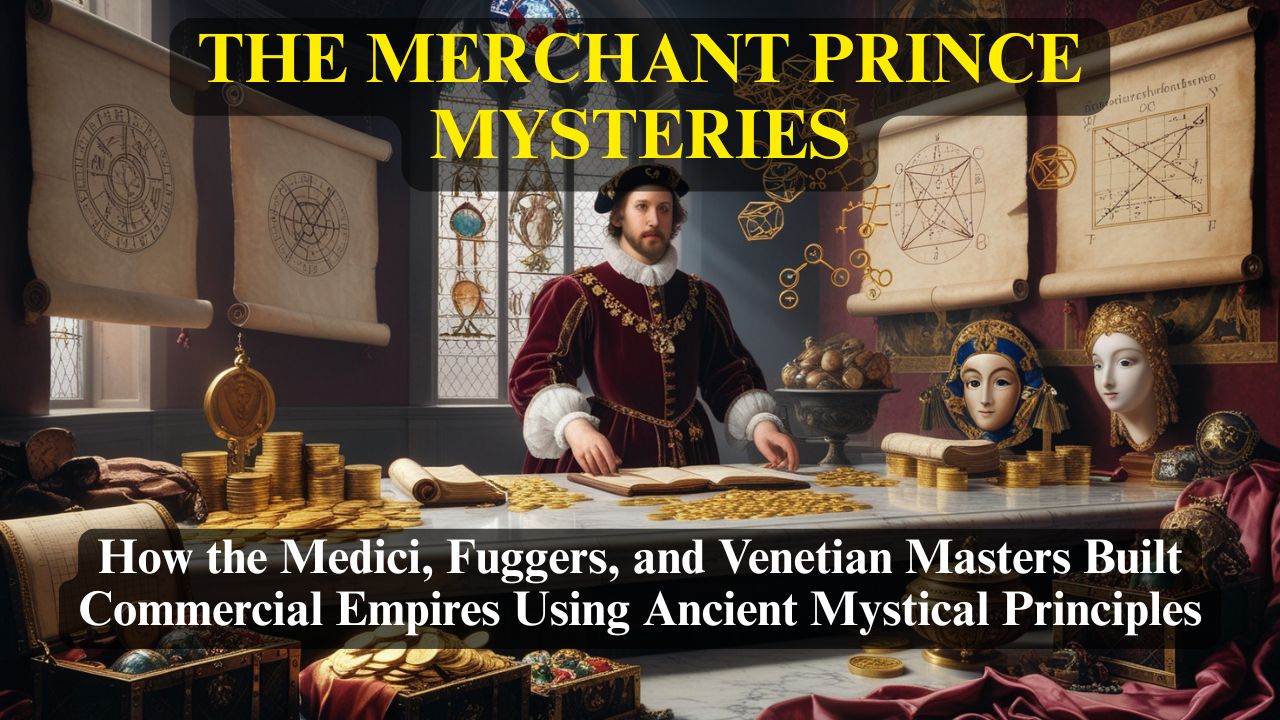
The Medici Mysteries: Banking on Divine Favor
In the heart of Renaissance Florence, within the imposing walls of the Palazzo Medici, the most powerful banking dynasty in European history conducted business according to principles that would have been familiar to Egyptian temple priests and Babylonian astrologer-merchants. The Medici understood that their true capital was not the florins in their vaults, but their mastery of the invisible forces that govern material manifestation.
Cosimo de' Medici, known as "Pater Patriae" (Father of the Country), maintained a private library that contained not only accounting texts and commercial correspondence, but also hermetic manuscripts, alchemical treatises, and astrological charts that guided every major financial decision. His legendary ability to predict market movements and political upheavals stemmed from his understanding that earthly events follow celestial patterns discernible to the trained eye.
The Medici banking houses operated according to what family insiders called the "Florentine Formula"—a synthesis of Platonic philosophy, hermetic wisdom, and practical economics that treated money as crystallized spiritual energy. Each branch of their international network was positioned not merely for commercial convenience, but according to mystical correspondences that enhanced the flow of prosperity through their operations.
Lorenzo de' Medici, the Magnificent, elevated these practices to an art form, surrounding himself with scholars, artists, and mystics who helped him decode the deeper patterns underlying market fluctuations. His famous patronage of Renaissance artists was not mere cultural vanity, but a sophisticated understanding that beauty and abundance operate according to the same harmonic principles—an investment in aesthetic excellence that inevitably attracted material prosperity.
The family's decline began only when later generations abandoned these mystical practices in favor of purely material calculations, demonstrating that their wealth had always depended more on spiritual alignment than on conventional business acumen.
The Venetian Tide Masters
From their palaces lining the Grand Canal, the great merchant families of Venice—the Contarinis, the Mocenigos, the Barbaros, and the Dandolos—built a commercial empire that stretched from London to Constantinople using principles derived from the ancient mystery schools. These were not merely traders, but masters of what they called "Tidal Economics"—the understanding that prosperity flows in predictable cycles that mirror the movements of ocean tides.
The Venetian nobles discovered that the same lunar influences that governed their famous tides also regulated the ebb and flow of commercial opportunity. Their private records, preserved in the Secret Archives of the Doge's Palace, reveal sophisticated systems for timing trade expeditions, currency exchanges, and major investments according to celestial cycles that ensured maximum profitability.
Enrico Dandolo, the blind Doge who orchestrated the Fourth Crusade, demonstrated the ultimate fusion of spiritual insight and commercial genius. His ability to perceive opportunities invisible to others—literally and figuratively—stemmed from his mastery of what the Venetians called "Inner Sight," a form of mystical perception that revealed the hidden currents of prosperity flowing beneath surface events.
The Arsenal of Venice, the great shipyard that built the fleets enabling Venetian dominance, was constructed according to sacred geometric principles that harmonized human labor with cosmic forces. The workers unknowingly participated in a vast magical operation that imbued every ship with the power to attract favorable winds, profitable cargo, and safe passage through dangerous waters.
The Venetian spice trade monopoly was maintained not through military force alone, but through the merchants' understanding of what they termed "Aromatic Alchemy"—the recognition that certain spices and exotic goods carried subtle energies that enhanced prosperity consciousness in those who traded them. Venice became wealthy not just by selling spices, but by becoming a focal point for abundance energy throughout the Mediterranean world.
The Fugger Formula: Mining the Earth's Secret Treasury
In the mountain city of Augsburg, the House of Fugger developed perhaps the most systematic application of mystical principles to wealth creation in European history. Jakob Fugger "the Rich," whose fortune at its peak exceeded the treasuries of entire kingdoms, approached business as a form of practical magic that required the same precision and spiritual discipline demanded by any sacred art.
The Fugger mining operations throughout the Alps were guided by principles that combined geological knowledge with hermetic wisdom. Their prospectors used not only traditional tools, but also dowsing rods, astrological charts, and alchemical calculations to locate the richest ore veins. They understood that metals form according to cosmic influences, and that successful mining required alignment with the same planetary forces that govern their creation.
Jakob Fugger maintained what amounted to a private mystery school within his commercial enterprise, training selected family members and trusted associates in the esoteric principles underlying material abundance. These initiates learned to perceive the invisible currents of prosperity that flow through human consciousness and to position themselves as conductors for these forces in the realm of commerce.
The Fugger banking network operated according to what they called the "Principle of Spiritual Leverage"—the understanding that consciousness aligned with cosmic law could multiply material resources far beyond what conventional calculation would suggest possible. Their loans to European royalty were made not based solely on collateral, but on their mystical assessment of whether the borrower's intentions aligned with divine will.
The family's legendary wealth reached its peak when they achieved what their private texts called "The Great Circulation"—a state where their commercial activities became so harmonized with universal principles that money flowed through their enterprises with the same inevitability that blood flows through a healthy body. At this point, they ceased to work for wealth and instead became channels through which abundance naturally expressed itself.
The Alchemical Mines
The Fugger mining operations represented the practical application of alchemical principles on an industrial scale. Their mountain facilities were designed as giant outdoor laboratories where the transmutation of base earth into precious metals occurred through the marriage of human will and cosmic timing.
Mining commenced only during astrologically favorable periods when planetary influences supported the successful extraction of metals from the earth. The workers, unknowingly participating in alchemical operations, followed procedures that enhanced both safety and productivity through alignment with natural rhythms.
The Fuggers discovered that certain mines yielded greater treasures when worked with consciousness of gratitude and reverence toward the earth's generosity. They instituted practices that honored the mountain spirits and ensured that their extraction of wealth enhanced rather than depleted the land's natural abundance.
The Phoenician Pathways: Templates and Trade Routes
Long before Venice ruled the Mediterranean, the Phoenician merchants of Tyre, Sidon, and Carthage established the template for mystical commerce that would influence trading dynasties for millennia. These master navigators understood that successful trade routes were not merely geographic paths, but channels of spiritual energy connecting regions of complementary need and abundance.
The Phoenicians possessed knowledge inherited from the ancient temple civilizations of Egypt and Mesopotamia, understanding that commerce at its highest level was a form of sacred exchange that enhanced prosperity for all participants rather than merely transferring wealth from one party to another. Their trading posts throughout the Mediterranean were positioned according to mystical geography that maximized the flow of beneficial energy through their commercial network.
Hiram of Tyre, who supplied materials for Solomon's Temple, demonstrated the ultimate integration of spiritual wisdom and commercial success. His ability to provide exactly the right materials at precisely the right time stemmed from his understanding of the cosmic correspondences that govern the manifestation of earthly resources.
The famous Phoenician purple dye monopoly was maintained through more than trade secrecy—it involved understanding the mystical properties of color and its effects on human consciousness. Purple, the color of royalty and spiritual authority, naturally commanded premium prices because it harmonized with archetypal energies associated with power and abundance.
The Phoenician alphabet, humanity's first practical writing system, was developed not merely for record-keeping but as a magical technology that enhanced their ability to communicate across vast distances and diverse cultures. Each letter contained subtle influences that facilitated successful negotiations and profitable agreements between trading partners.
The Silk Road Mysteries: Marco Polo's Hidden Knowledge
The legendary Silk Road that connected East and West was more than a trade route—it was a channel of consciousness that allowed the exchange of mystical knowledge alongside material goods. The merchant families who dominated this transcontinental commerce possessed understanding that transcended cultural boundaries and religious differences.
Marco Polo's family, the merchant princes of Venice who opened China to European eyes, possessed fragments of ancient knowledge that enabled them to navigate not only geographic distances but also the cultural and spiritual territories that determined trading success. Their famous journeys were guided by principles that combined practical navigation with mystical insight.
The Polo family understood that successful long-distance trade required what they called "Consciousness Bridging"—the ability to perceive and harmonize with the spiritual atmosphere of different regions and peoples. Their legendary success in establishing trading relationships across vast cultural divides stemmed from this mystical diplomacy rather than superior goods or competitive pricing alone.
The silk itself, the commodity that gave the route its name, was recognized by these master merchants as carrying subtle energies that enhanced prosperity consciousness in all who handled it. Silk became the perfect metaphor for abundance—beautiful, valuable, and infinitely renewable when produced in harmony with natural cycles.
The exchange of goods along the Silk Road facilitated an even more valuable exchange of consciousness technologies—meditation techniques, alchemical formulas, and mystical practices that enhanced the wealth-creating abilities of participating merchants. The route's decline coincided with the loss of this deeper understanding of commerce as spiritual practice.
The Hanseatic League: The Brotherhood of Merchant Mystics
In Northern Europe, the Hanseatic League represented perhaps the most sophisticated example of mystical principles applied to collective commerce. This confederation of merchant cities operated according to principles that treated business as a form of group meditation designed to manifest abundance for entire communities rather than individual entrepreneurs.
The League's constitution, written in code that concealed mystical teachings within commercial regulations, established procedures that ensured member cities remained aligned with the cosmic principles governing sustainable prosperity. Their trading posts from London to Novgorod were positioned according to sacred geography that enhanced the flow of beneficial energy throughout Northern Europe.
The Hanseatic merchants developed what they called "Collective Consciousness Commerce"—a system where individual trading decisions were coordinated through what modern researchers might recognize as a form of group intuition. Major trading ventures were undertaken only when a critical mass of merchants simultaneously perceived favorable cosmic conditions.
Bernt Notke of Lübeck, the League's greatest individual merchant prince, demonstrated the power of applying mystical principles to commerce on a grand scale. His shipping empire was built on his ability to perceive the invisible currents of supply and demand that flow beneath market surfaces, allowing him to position resources where they would generate maximum benefit for all participants.
The League's decline began when member cities abandoned these collective practices in favor of competitive individualism, demonstrating that their prosperity had always depended more on spiritual cooperation than on conventional economic advantages.
The Secret Societies of Commerce
Behind many of history's great merchant dynasties operated secret societies dedicated to preserving and transmitting the mystical knowledge underlying true prosperity. These brotherhoods, often disguised as guilds or trading associations, maintained the ancient wisdom traditions in forms adapted to the commercial realities of their times.
The Knights Templar, before their official dissolution, operated what was essentially the medieval world's first international banking system based on mystical principles derived from their guardianship of Solomon's Temple. Their understanding of sacred geometry, numerology, and cosmic timing allowed them to create financial instruments and credit systems that seemed miraculous to their contemporaries.
After the Templars' suppression, their knowledge passed to other organizations—the Rosicrucians, certain Masonic lodges, and private societies within major banking houses—that continued to apply mystical principles to wealth creation. These groups understood themselves as guardians of economic wisdom too powerful to be revealed to unprepared minds.
The Merchant Adventurers of London, the Worshipful Company of Goldsmiths, and similar organizations served as cover for the transmission of consciousness technologies that enhanced their members' ability to perceive and capitalize on emerging opportunities. Their elaborate initiation ceremonies were designed to awaken latent faculties of mystical perception essential for transcendent commercial success.
These societies maintained libraries containing texts that revealed the spiritual dimensions of money, the consciousness techniques for attracting abundance, and the cosmic timing principles that govern all manifestation. Membership was restricted to those who demonstrated both commercial aptitude and spiritual readiness to handle such powerful knowledge responsibly.
The Modern Inheritance
The great merchant dynasties of history left behind more than material fortunes—they established templates of consciousness that continue to influence global commerce today. The mystical principles they employed remain active within certain banking houses, investment firms, and commercial enterprises whose success seems to transcend conventional explanation.
The Rothschild banking dynasty, whose influence spanning centuries defies normal business lifecycle patterns, has maintained certain practices inherited from earlier mystical traditions. Their legendary ability to anticipate and profit from historical developments stems from understanding that goes beyond mere information gathering to encompass the kind of cosmic timing mastery possessed by ancient oracles.
Silicon Valley's most successful entrepreneurs, whether consciously or unconsciously, employ principles that would have been familiar to Venetian merchant princes or Hanseatic League masters. The emphasis on vision, timing, network effects, and exponential growth reflects the same consciousness technologies that built the great trading empires of the past.
Modern commodity exchanges, currency markets, and international trade systems operate according to patterns established by merchant mystics who understood commerce as a form of global circulation system designed to distribute abundance according to cosmic law. The apparent chaos of modern markets conceals deeper rhythms discernible to those who possess the ancient keys of perception.
The challenge for contemporary prosperity seekers lies in recognizing and applying these timeless principles within the context of digital technology and global communications. The same consciousness that guided caravans across desert routes and sailing ships across uncharted seas can navigate the opportunities and challenges of the modern marketplace.
The Eternal Principles
From the Phoenician temples to the Florentine banks, from the Venetian palaces to the Silk Road caravanserai, certain principles consistently enabled ordinary merchants to become extraordinary princes of prosperity. These principles transcend any particular time, culture, or economic system because they reflect fundamental laws governing the relationship between consciousness and material manifestation.
The Principle of Sacred Exchange: True prosperity results from transactions that enhance abundance for all participants rather than merely transferring wealth from one party to another. The greatest merchant princes understood themselves as facilitators of cosmic circulation rather than accumulators of private treasure.
The Principle of Harmonic Timing: Success depends as much on when you act as on what you do. The masters learned to perceive and align with the cosmic rhythms that determine the optimal moments for different types of commercial activity.
The Principle of Consciousness Bridging: Sustainable trading relationships require the ability to perceive and harmonize with the cultural and spiritual atmosphere of different regions and peoples. Commerce at its highest level became a form of cultural diplomacy that enhanced understanding between diverse communities.
The Principle of Abundance Circulation: Wealth must flow to grow. The merchant princes who accumulated the greatest fortunes were those who understood themselves as channels for abundance rather than containers for accumulation.
The Principle of Sacred Geography: Location matters not just for practical convenience but for mystical correspondence. The masters positioned their operations according to subtle energies that enhanced the flow of prosperity through their enterprises.
The Living Legacy
The merchant prince mysteries continue to operate in the modern world, awaiting rediscovery by contemporary seekers who approach commerce with the same reverence and sophistication that the ancients brought to their sacred arts. The principles that built the great trading dynasties remain as potent today as they were centuries ago, requiring only adaptation to current circumstances and technologies.
The greatest secret of the merchant princes was their recognition that business, at its highest expression, is a spiritual practice—a way of participating in the cosmic circulation system that distributes abundance throughout creation. They understood that their role was not to hoard wealth but to serve as conscious agents of prosperity's natural expression.
This understanding transformed them from mere traders into priests of abundance, from simple businessmen into channels of cosmic blessing. Their palaces, banks, and trading posts became temples where the ancient mysteries of prosperity were practiced daily through the sacred art of conscious commerce.
The merchant prince mysteries await rediscovery by any contemporary seeker willing to approach business with the same combination of practical skill and spiritual wisdom that built the great commercial dynasties of history. In our age of global connection and instant communication, the potential for applying these ancient principles has never been greater.
The Oracle's Treasury: Divining Wealth Through Sacred Wisdom
The Oracle's Treasury: Divining Wealth Through Sacred Wisdom
The Temple Economics of Divine Timing 
Long before modern markets existed, the most sophisticated economic systems on Earth operated within the sacred precincts of oracle temples. These were not mere religious institutions, but vast economic empires that combined spiritual insight with material mastery. The priests and priestesses who served as intermediaries between the divine realm and mortal concerns possessed a form of insider trading that no earthly authority could regulate—direct communication with the cosmic forces that orchestrate all abundance.
The Oracle of Delphi, perched on the slopes of Mount Parnassus, controlled what was arguably the ancient world's first international banking system. Pilgrims arrived from across the Mediterranean bearing gold, silver, and precious goods to purchase prophetic guidance for their commercial ventures. The Pythia's pronouncements determined the fate of trade expeditions, the timing of new business ventures, and the rise and fall of merchant dynasties.
Yet the true wealth of Delphi lay not in the offerings received, but in the oracle's uncanny ability to perceive the optimal timing for any endeavor. City-states consulted the Pythia before establishing colonies, merchants sought guidance before launching trade expeditions, and even kings deferred to her wisdom before going to war. This divine timing intelligence created a self-reinforcing cycle of prosperity that lasted for over a thousand years.
The Astronomical Wealth of Babylon
In the ziggurat temples of ancient Babylon, priest-astronomers developed the most sophisticated system of cosmic timing the world had ever known. These were not merely stargazers, but practical mystics who understood that celestial movements directly influenced terrestrial commerce. Their meticulous observations of planetary cycles, lunar phases, and stellar conjunctions formed the foundation of both astrology and economics.
The Chaldean priests maintained detailed records of how celestial events correlated with market fluctuations, harvest yields, and trade route profitability. They discovered that certain planetary configurations consistently coincided with periods of economic expansion, while others reliably preceded commercial contraction. This knowledge allowed them to advise merchants, farmers, and traders with supernatural accuracy.
Nabu-rimanni, the great astronomer-priest of the 6th century BCE, developed mathematical models that could predict favorable trading periods months in advance. His calculations enabled Babylonian merchants to monopolize certain trade routes by arriving at distant markets precisely when local demand peaked. The temple's cut of these divinely timed profits funded the construction of the Hanging Gardens and other wonders that demonstrated Babylon's unprecedented prosperity.
The sacred calendar maintained by these priest-economists contained what modern analysts would recognize as the earliest form of technical analysis. They tracked recurring cycles of abundance and scarcity, identifying the cosmic rhythms that governed everything from grain prices to precious metal availability. This temporal intelligence proved far more valuable than any physical treasure.
The Egyptian Temple Treasuries
Along the life-giving waters of the Nile, Egyptian temple complexes operated as the ancient world's most sophisticated economic institutions. The priests of Thoth at Hermopolis, the priestesses of Isis at Philae, and the solar priests of Ra at Heliopolis possessed knowledge that combined astronomical precision with mystical insight to create abundance on an almost unimaginable scale.
The annual flooding of the Nile provided these temple economists with a perfect laboratory for studying the relationship between cosmic cycles and material prosperity. They discovered that the river's behavior followed celestial patterns that could be calculated centuries in advance. This allowed them to predict not only flood timing and intensity, but also the resulting agricultural yields and subsequent economic conditions throughout the kingdom.
Imhotep, the legendary architect-physician-priest who designed the Step Pyramid, was also history's first recorded economic forecaster. His careful observations of the relationship between stellar positions and Nile behavior enabled him to predict seven years of abundance followed by seven years of scarcity—the foundation of Egypt's economic dominance during the Old Kingdom period.
The Temple of Karnak operated what was essentially the ancient world's first central bank, with satellite temples throughout Egypt serving as branches in a vast economic network. The priests used their cosmic timing knowledge to regulate grain storage, precious metal accumulation, and trade route optimization. Their ability to predict and prepare for economic cycles created a stability that allowed Egyptian civilization to flourish for over three millennia.
The Celtic Druids and the Sacred Cycles
In the mist-shrouded groves of ancient Europe, the Druidic orders possessed their own sophisticated understanding of temporal economics. The Celtic druids tracked what they called the "Sacred Wheels"—recurring cycles of natural and economic abundance that governed everything from livestock breeding to metal working.
The druids discovered that certain times of the year, determined by complex calculations involving solar, lunar, and stellar positions, were optimal for different types of economic activity. They developed a system of "Seasonal Sorcery" that allowed Celtic tribes to maximize the prosperity potential of every undertaking.
The great druid Diviciacus, who advised Caesar during the Gallic Wars, demonstrated this knowledge by accurately predicting which Roman military campaigns would succeed based on their timing relative to celestial cycles. His counsel was so valuable that he accumulated wealth rivaling that of Roman senators, despite officially owning no property.
The druids taught that abundance flows in spirals rather than straight lines, following patterns that mirror the movements of celestial bodies. By aligning human activity with these cosmic spirals, any individual or community could tap into the natural rhythms of prosperity.
The Oracle Networks of Ancient Greece
Beyond the famous Oracle of Delphi, ancient Greece supported a vast network of prophetic sites, each specializing in different aspects of temporal guidance. The Oracle of Zeus at Dodona advised on agricultural timing, the Oracle of Apollo at Claros guided maritime ventures, and the Oracle of Asclepius at Epidaurus provided counsel on the optimal timing for healing and restoration activities.
These oracles operated as an interconnected intelligence network, sharing information about cosmic conditions and their economic implications across the Mediterranean world. Merchants could consult multiple oracles to triangulate the most favorable timing for complex ventures involving different regions and time frames.
Lysander of Sparta demonstrated the practical value of oracular timing when he consulted the Oracle of Ammon before his naval campaigns. By attacking only when cosmic conditions favored Spartan victory, he accumulated a personal fortune that exceeded the treasuries of most city-states. His success was attributed not to superior strategy, but to divine timing.
The oracle network also maintained what amounted to ancient credit systems, where favorable prophecies could be traded like commodity futures. A merchant blessed with a positive oracle regarding future grain harvests could leverage that prophecy to secure immediate financing for expanded operations.
The Roman Augurs and Imperial Economics
As Rome expanded its empire, it systematically absorbed and refined the temporal wisdom of conquered peoples. The Roman College of Augurs developed perhaps the most pragmatic system of divine economic guidance in the ancient world, combining Greek oracular traditions with Egyptian astronomical precision and Celtic seasonal wisdom.
The augurs understood that imperial prosperity required perfect synchronization between human ambition and cosmic timing. They developed elaborate systems for determining the most auspicious moments for everything from military campaigns to tax collection, from public works projects to trade negotiations.
Marcus Licinius Crassus, the wealthiest man in Roman history, maintained a private team of augurs who advised him on the optimal timing for his various business ventures. His real estate empire, slave trading operations, and money lending activities were all coordinated according to cosmic timing principles that ensured maximum profitability.
The augurs taught that wealth flows according to what they called the "Temporal Tides"—predictable cycles of cosmic energy that could be surfed like ocean waves by those who understood their patterns. Missing the optimal timing for any venture was like trying to sail against the tide; even with superior resources, failure was nearly inevitable.
The Sacred Mathematics of Prosperity
Underlying all these ancient systems of divine economic guidance was a sophisticated understanding of what modern researchers might call "temporal mathematics." The temple economists discovered that prosperity follows precise mathematical patterns that mirror the movements of celestial bodies.
Pythagoras, whose mathematical insights revolutionized both music and mysticism, applied the same harmonic principles to economic timing. He taught that just as musical notes create harmony through mathematical relationships, business ventures create prosperity through temporal relationships with cosmic cycles.
The Pythagorean school developed a system called "Numerical Divination" that could calculate the most favorable timing for any financial endeavor. Students learned to recognize the mathematical signatures of different types of opportunities and to time their actions according to cosmic numerical sequences.
This sacred mathematics revealed that time itself has texture and flavor—certain moments naturally support expansion while others favor consolidation, some periods encourage risk-taking while others counsel patience. The ancient masters learned to read these temporal qualities as accurately as a sailor reads wind and weather.
The Hermetic Timing Traditions
The Hermetic schools of Alexandria synthesized all these various traditions into a comprehensive system of temporal alchemy. They taught that just as the alchemists could transmute base metals into gold through proper timing and technique, any individual could transmute ordinary circumstances into golden opportunities through mastery of cosmic timing.
The Hermetic texts revealed seven distinct types of cosmic time, each governed by a different planetary intelligence and each optimal for specific types of manifestation. Mercury time favored communication and trade, Venus time blessed artistic and luxury ventures, Mars time energized competitive enterprises, Jupiter time supported expansion and education, Saturn time provided discipline and structure, while Solar and Lunar times governed the fundamental rhythms of accumulation and distribution.
Hermes Trismegistus himself was said to have accumulated vast wealth not through any earthly business, but through his perfect attunement to these cosmic timing cycles. His legendary emerald tablets contained encoded instructions for recognizing and utilizing the optimal moments for material manifestation.
The Celtic Tree Calendar and Economic Cycles
The Celtic druids developed perhaps the most sophisticated natural timing system in the ancient world—the sacred tree calendar that aligned human activity with the deepest rhythms of natural abundance. Each tree in their calendar represented not only a time period, but a specific type of economic energy and opportunity.
During Oak periods, ventures requiring strength and permanence were favored. Willow times supported intuitive investments and women-led enterprises. Apple periods blessed ventures related to knowledge and education, while Pine times favored long-term building projects. By aligning their economic activities with these natural cycles, Celtic communities achieved remarkable prosperity despite the harsh northern climate.
The druids taught that each person was born under a particular tree influence that determined their natural timing for different types of prosperity. A person born under the Oak would find their greatest success during Oak periods, while someone born under the Willow would thrive during Willow times. This created a natural division of labor based on cosmic timing rather than artificial social structures.
The Modern Application of Ancient Timing
Though we live in an age that has largely forgotten these temporal wisdom traditions, the underlying principles remain as powerful as ever. Modern research in chronobiology, circadian rhythms, and market timing has begun to rediscover what the ancient oracles always knew—that success in any endeavor depends as much on when you act as on what you do.
The same cosmic cycles that guided Egyptian grain traders and Babylonian merchants continue to influence modern markets. The lunar cycles that determined the best times for ancient trade expeditions still affect everything from stock market volatility to real estate sales. The seasonal patterns recognized by Celtic druids remain visible in contemporary business cycles.
The challenge for modern prosperity seekers is learning to perceive these subtle temporal rhythms in a world dominated by artificial light and mechanical time. The ancient oracles spent years training their sensitivity to cosmic timing; contemporary practitioners must develop similar attunement despite the distractions of digital technology.
The Five Sacred Timing Principles
From all the ancient traditions emerges a consistent set of principles that govern the relationship between cosmic timing and material prosperity:
The Principle of Rhythmic Alignment: All abundance flows in cycles. Success comes from aligning personal action with these natural rhythms rather than fighting against them. The ancients understood that forcing action during unfavorable periods was like swimming upstream—exhausting and ultimately futile.
The Principle of Seasonal Wisdom: Different types of activities are naturally favored during different cosmic seasons. Just as farmers plant in spring and harvest in fall, conscious prosperity creators learn to initiate ventures during expansion periods and consolidate gains during contraction periods.
The Principle of Lunar Timing: The moon's phases directly influence the ebb and flow of creative and commercial energy. New moon periods favor new beginnings, full moon periods support culmination and completion, while waning moon periods are optimal for clearing away obstacles and preparing for the next cycle.
The Principle of Planetary Influences: Each planet governs specific types of endeavors and opportunities. Mercury supports communication and trade, Venus blesses beauty and luxury ventures, Mars energizes competitive enterprises, Jupiter expands education and publishing, while Saturn provides structure and long-term planning.
The Principle of Personal Timing: Each individual has their own cosmic timing signature based on birth patterns and current planetary transits. Success comes from understanding your personal timing cycles and acting when your individual rhythms align with universal rhythms.
The Oracle's Ultimate Secret
The greatest secret possessed by the ancient oracles was not their ability to predict the future, but their understanding that the future exists in multiple potential forms simultaneously. Their true gift lay in perceiving which potential futures were most favored by cosmic timing and helping their clients choose actions that would manifest the most prosperous possibilities.
The oracles understood that abundance is not scarce but infinite, not random but rhythmic, not reserved for the few but available to all who learn to read the cosmic calendar. They taught that every moment contains the seed of prosperity, but some moments are more fertile than others for planting specific types of abundance.
This wisdom revealed that poverty is primarily a timing problem rather than a resource problem. Those who struggle financially are usually not lacking in ability or opportunity, but in their understanding of when to act and when to wait, when to push forward and when to allow natural forces to work.
The Eternal Treasury
The true treasury of the oracles was never their accumulated gold and silver, but their mastery of time itself. They understood that time is the ultimate currency—more valuable than money because it determines when money flows and when it stagnates, when opportunities appear and when they vanish.
This temporal mastery created what the ancients called "The Eternal Treasury"—a state of consciousness that could generate abundance in any era, under any conditions, through perfect attunement to the cosmic rhythms that govern all manifestation. Unlike material treasures that could be stolen or lost, this treasury existed within consciousness itself and traveled with its possessor through all circumstances.
The oracles taught that every human being possesses access to this eternal treasury through their connection to the same cosmic intelligence that guides the stars in their courses and the seasons in their turning. The key to accessing this treasury lies not in complex calculations or elaborate rituals, but in developing the sensitivity to perceive and the wisdom to follow the subtle guidance that flows continuously from the divine source of all abundance.
In the end, the oracle's greatest revelation was that we are all oracles of our own prosperity, gifted with the same cosmic intelligence that created galaxies and governs the dance of atoms. The treasury we seek exists not in some distant temple, but in the sacred oracle chamber of our own awakened consciousness.
The Alchemist's Golden Formula
The Alchemist's Golden Formula
The Sacred Deception 
In the shadowed laboratories of medieval Europe, where alchemists labored over their furnaces and retorts, a magnificent deception was perpetrated upon the uninitiated. While common men believed these mystics sought to create physical gold from baser substances, the true adepts were engaged in a far more profound enterprise: the transmutation of human consciousness from poverty to prosperity.
Nicolas Flamel, the legendary scrivener of Paris whose humble bookshop concealed one of the greatest fortunes of the 14th century, understood this principle with crystalline clarity. His neighbors marveled at how a simple manuscript copier could afford to endow hospitals, build churches, and finance charitable works throughout France. They whispered of miraculous transmutations performed in his secret laboratory, never suspecting that the real alchemy occurred within the sacred chambers of his own awareness.
The Livre des Figures Hiéroglyphiques that Flamel claimed to have discovered was not a manual for metallurgical transformation, but a codex of consciousness expansion. Each symbolic figure represented a stage in the inner work that transmutes the base metal of scarcity thinking into the philosophical gold of abundance awareness.
The Seven Sacred Operations
The alchemical texts spoke of seven distinct operations necessary for the Great Work. To the profane, these appeared to describe chemical processes. To the initiated, they revealed the precise stages of consciousness transformation that inevitably results in material prosperity.
Calcination: The Burning Away of False Beliefs
The first operation required the aspirant to subject their limiting beliefs about money and worth to the fire of truth. Just as the alchemist burned away impurities from crude ore, the seeker had to incinerate every thought that supported scarcity, lack, or unworthiness.
Paracelsus, the great physician-alchemist of the 16th century, taught that "the dose makes the poison." Applied to consciousness, this meant that even beneficial beliefs became toxic when held in excess. The calcination process burned away not only negative thoughts about wealth, but also excessive attachment to poverty as a spiritual virtue.
Dissolution: Liquefying Rigid Mental Patterns
In the second operation, the calcined matter was dissolved in philosophical water—the universal solvent that could break down any substance. In consciousness alchemy, this water represented the fluid awareness that dissolves crystallized mental patterns and outdated identity structures.
John Dee, advisor to Queen Elizabeth I and master of both practical and mystical arts, demonstrated this principle through his ability to navigate between the worlds of scholarship and commerce. His vast library and alchemical laboratory were funded through his understanding that rigid thinking creates financial rigidity, while fluid consciousness allows wealth to flow naturally.
Separation: Distinguishing Truth from Illusion
The third stage required careful separation of valuable essence from worthless dross. The consciousness alchemist learned to distinguish between authentic abundance principles and the fool's gold of get-rich-quick schemes or material obsession without spiritual foundation.
Raymond Lully, the 13th-century mystic whose alchemical works influenced generations of seekers, taught that this separation was the most crucial stage. He wrote in cipher that "the gold that glitters in the mind must be separated from the lead that weighs upon the heart." Only by distinguishing between true wealth consciousness and mere material desire could the seeker proceed to higher operations.
Conjunction: The Sacred Marriage of Mind and Matter
In the fourth operation, the purified elements were joined in sacred union. For the consciousness alchemist, this represented the marriage between spiritual understanding and practical action—the point where mystical awareness becomes material manifestation.
Agrippa von Nettesheim, whose De Occulta Philosophia contained profound wealth-creation principles disguised as magical theory, demonstrated this conjunction through his ability to manifest resources for his studies regardless of political persecution or financial hardship. He understood that abundance results from the perfect marriage between heavenly vision and earthly implementation.
Putrefaction: The Dark Night of Transformation
The fifth stage, often called the "black work," required the aspirant to endure a period where old consciousness patterns died and new ones had not yet fully emerged. This was the most challenging phase, where faith in abundance principles was tested through apparent lack or financial adversity.
Albertus Magnus, teacher of Thomas Aquinas and master of both natural philosophy and hermetic wisdom, wrote that "in putrefaction lies the secret of regeneration." Those who persevered through this dark night of the soul emerged with unshakeable certainty in their ability to create wealth through consciousness alignment.
Distillation: Refining the Essence
In the sixth operation, the transformed matter was subjected to repeated distillation, each cycle producing a purer essence. The consciousness alchemist refined their understanding through cycles of application, observation, and adjustment until their wealth-creating ability became as reliable as natural law.
Coagulation: The Crystallization of Gold
The final operation saw the philosophical gold crystallize into stable form. For the consciousness alchemist, this meant the complete integration of abundance awareness into daily life, where prosperity flowed as naturally as breath.
The True Philosopher's Stone
The legendary philosopher's stone—lapis philosophorum—was never a physical substance, but a perfected state of consciousness capable of transmuting any situation into golden opportunity. The alchemical masters encoded this understanding in seemingly chemical formulas that were actually psychological and spiritual prescriptions.
Fulcanelli, the mysterious 20th-century alchemist whose identity remains unknown, wrote that "the stone that is no stone" exists within every human being. It is activated not through laboratory procedures, but through the systematic transformation of consciousness according to universal principles.
The stone's legendary properties—infinite transmutation, perfect health, and immortal life—described the natural state of consciousness freed from belief in limitation. Those who achieved this state found that their relationship with the material world transformed completely. Money, opportunities, and resources flowed toward them with the same inevitability that iron filings move toward a magnet.
The Hermetic Wealth Formula
Hidden within the alchemical texts was a precise formula for wealth creation, encoded in the ancient Hermetic axiom: Solve et Coagula—dissolve and coagulate. This represented the perpetual cycle of releasing limiting patterns and crystallizing abundance patterns that formed the heart of the Great Work.
Solve: Dissolving old patterns of scarcity thinking, victim consciousness, and belief in financial struggle. This required recognizing that poverty exists only in the realm of thoughts and feelings, never in the realm of infinite possibility.
Coagula: Crystallizing new patterns of prosperity consciousness, creative empowerment, and absolute certainty in one's ability to manifest abundance. This involved the systematic cultivation of golden mental habits that inevitably produce golden results.
The master alchemists understood that this formula must be applied continuously. Consciousness, like chemical compounds, tends toward entropy without constant refinement. Daily practice of Solve et Coagula maintained the purity of awareness necessary for consistent wealth manifestation.
The Secret Substances
The alchemical texts spoke of mysterious substances required for the Great Work. To the uninitiated, these appeared to be exotic chemicals or rare minerals. To the adept, they represented specific states of consciousness essential for abundance manifestation.
Philosophical Mercury: The quick, volatile substance that represented the fluid intelligence capable of recognizing and seizing opportunity. Mercury consciousness moved swiftly between different possibilities, always finding the most profitable path forward.
Philosophical Sulfur: The fiery, fixed principle that represented unwavering faith in abundance. Sulfur consciousness burned away doubt and maintained steady focus on desired outcomes regardless of temporary appearances.
Philosophical Salt: The crystallizing agent that transformed spiritual understanding into material results. Salt consciousness provided the practical wisdom necessary to ground mystical insights in profitable action.
The master work required the perfect balance of these three principles. Too much Mercury led to scattered energy without results. Too much Sulfur created rigid attachment without adaptability. Too much Salt produced material focus without spiritual inspiration.
The Golden Dawn of Understanding
As the medieval period waned and the Renaissance dawned, certain alchemists began to reveal more openly that their true work concerned consciousness transformation rather than material transmutation. These masters, while maintaining the traditional symbolism, started teaching the practical applications of alchemical principles to wealth creation.
Marsilio Ficino, the great Renaissance philosopher and translator of Hermetic texts, established an academy in Florence where students learned to apply alchemical principles to every aspect of life, including financial prosperity. His teachings influenced the merchant princes of Italy, who used alchemical consciousness techniques to build the great banking dynasties of the Renaissance.
The Laboratory of the Mind
The true alchemical laboratory was never a room filled with furnaces and glass vessels, but the sacred space of human consciousness itself. Within this laboratory, the adept performed the Great Work daily through specific mental and spiritual practices.
Morning Calcination: Beginning each day by burning away any thoughts of limitation or lack that had accumulated during sleep. This involved conscious recognition of abundance as the natural state and deliberate dismissal of scarcity thinking.
Noon Conjunction: At the height of daily activity, practicing the sacred marriage of spiritual awareness and practical action. Every business decision, financial choice, and commercial interaction became an opportunity to express abundance consciousness.
Evening Distillation: Concluding each day by extracting the essence of wisdom from all experiences, successful or challenging. This practice refined understanding and prepared consciousness for even greater prosperity manifestation.
The Eternal Elixir
The alchemists spoke of an Elixir Vitae—an elixir of life that granted immortality and perfect health. In the realm of consciousness alchemy, this elixir was the recognition that abundance awareness, once fully integrated, becomes a permanent aspect of being that transcends all temporary circumstances.
Those who achieved this realization found that their wealth-creating ability became as natural and effortless as breathing. They no longer needed to work for money, but rather money worked for them. They had become, in the truest sense, masters of the material realm through mastery of the realm of mind.
The Modern Application
Though we live in an age that has largely forgotten the wisdom of the alchemists, their formulas remain as potent as ever. The consciousness that could transmute base metals into gold in medieval laboratories can transmute base circumstances into golden opportunities in modern life.
The smartphone and the crucible operate according to the same fundamental laws of transformation. The principles that allowed Nicolas Flamel to manifest extraordinary wealth from a simple bookshop can enable any contemporary seeker to create abundance through the systematic application of consciousness alchemy.
The Ultimate Revelation
The greatest secret of the alchemical tradition was that the gold they sought to create already existed in infinite abundance within the realm of pure consciousness. The Great Work was never about forcing transformation upon an unwilling universe, but about removing the obstacles that prevented the natural expression of inherent abundance.
Every human being possesses within their consciousness the complete alchemical laboratory necessary for the Great Work. The furnace is attention, the crucible is imagination, the fire is desire, and the gold is the inevitable result when these forces are properly aligned and directed.
The philosopher's stone was never lost because it was never external. It remains eternally available within the consciousness of anyone willing to undertake the Great Work of transmuting their awareness from the base metal of limitation to the philosophical gold of infinite creative potential.
In the end, the alchemists discovered that they themselves were the philosopher's stone—conscious beings capable of transforming any circumstance into golden opportunity through the systematic application of consciousness principles that govern all creation.
The Secret Book of Prosperity
The Secret Book of Prosperity
Hidden within the stone walls of forgotten monasteries and sealed beneath the flagstones of ancient guild halls lie the most closely guarded secrets of material abundance. These are not mere accounting ledgers or trade agreements, but sacred texts that reveal the mystical mechanics of wealth creation—knowledge so powerful it was deemed too dangerous for common minds.
The Venetian Cipher 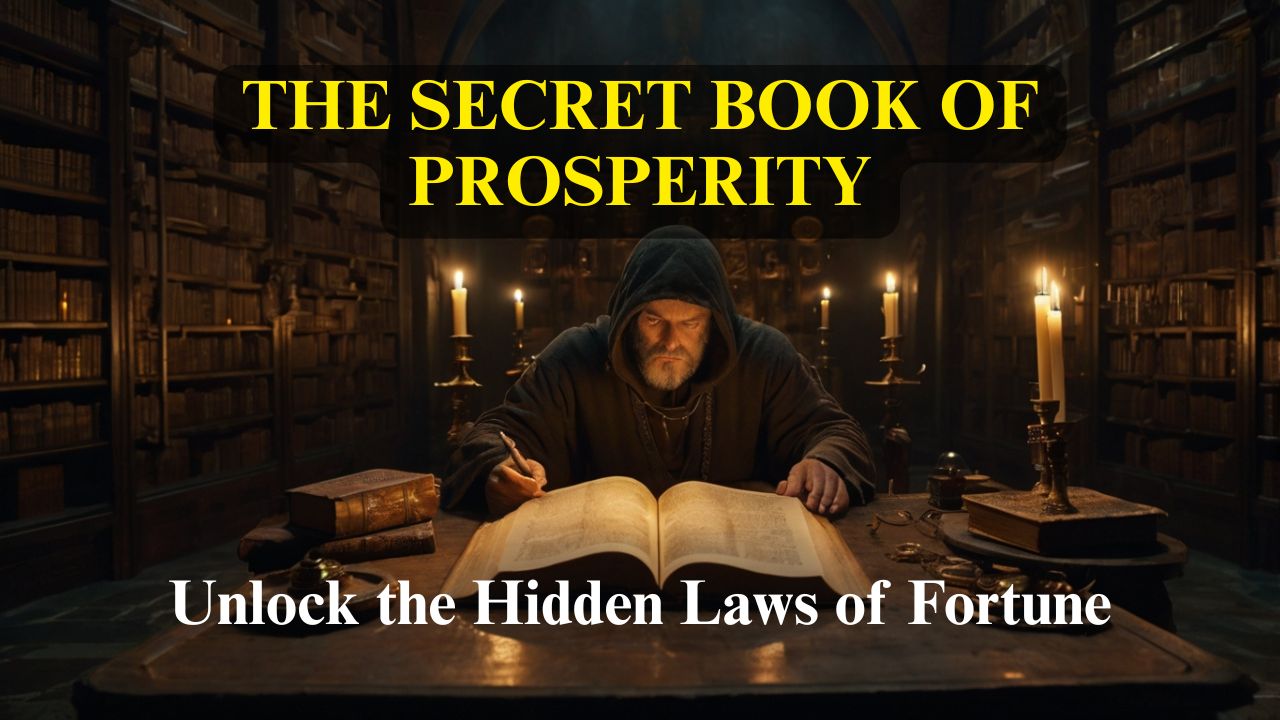
In the shadowed archives of the Doge's Palace, beneath layers of maritime dust and diplomatic silence, once lay the Libro d'Oro Mercantile—the Golden Book of Commerce. This was no ordinary merchant's handbook, but a mystical codex that revealed how the Republic of Venice commanded the trade routes of the known world for over a millennium.
The book contained more than shipping schedules and currency exchanges. Within its illuminated pages were encoded the sacred mathematics of market manipulation, the celestial timing of trade ventures, and the alchemical formulas for transmuting copper coins into ducats of gold. Each page was written in a cipher known only to the inner circle of the Merchant Council, passed down through generations like a religious sacrament.
Marco Polo's family, the merchant princes who opened the Silk Road to European eyes, possessed fragments of this knowledge. Their wealth came not merely from brave exploration, but from understanding the mystical correspondences between earthly commerce and cosmic law. They knew which phases of the moon favored negotiation, which planetary conjunctions blessed new ventures, and how to read the subtle energies that flow between human desire and material manifestation.
The Templar Treasury Scrolls
When the Knights Templar were dissolved in 1307, their vast banking network—which had financed kings and funded crusades—vanished as if by sorcery. But the true treasure was never their gold; it was their Codex Thesauri, the Treasury Codex, which contained the mystical principles that had allowed a military order to become Europe's first international banking system.
These scrolls, written in a combination of Latin, Hebrew, and ancient symbols derived from Solomon's Temple, revealed that the Templars understood money as a form of crystallized spiritual energy. They practiced what they called "sacred usury"—the art of making money multiply through alignment with divine will rather than mere calculation.
The Codex spoke of the "Seven Seals of Abundance," mystical states of consciousness that, when properly activated, would cause wealth to flow toward the practitioner like iron filings to a lodestone. Each seal corresponded to a different aspect of material manifestation: Vision, Faith, Action, Patience, Gratitude, Circulation, and Transcendence.
Jacques de Molay, the last Grand Master, was said to have concealed the most potent sections of the Codex before his execution. Legend holds that these pages were smuggled to Scotland, where they became the foundation for certain secret societies that would later influence the banking houses of London and Amsterdam.
The Guild Master's Grimoire
Throughout medieval Europe, the most successful craft guilds possessed what they called Libri Secretorum—Books of Secrets—that contained far more than trade techniques. These grimoires revealed the spiritual dimensions of commerce, teaching that true prosperity required mastery over both material and invisible forces.
The Medici banking family's rise to power was built upon such a text, inherited from Florentine wool merchants who had discovered the manuscript in the ruins of a Roman villa. This particular codex, known as the Mercurius Manuscript, taught that wealth was governed by the same principles that alchemists used to transmute base metals.
The manuscript revealed the doctrine of "Sympathetic Commerce"—the understanding that like attracts like in the realm of trade. A merchant who cultivated gold consciousness would naturally attract golden opportunities. One who thought in terms of silver would find silver ventures. Those trapped in copper thinking would struggle with base transactions throughout their lives.
Giovanni di Bicci de' Medici, founder of the Medici banking dynasty, was initiated into these mysteries through his membership in a secret guild known as the Custodes Aurum—the Guardians of Gold. The guild met in hidden chambers beneath Florence's Ponte Vecchio, where they practiced ancient rituals designed to align their consciousness with the flow of universal abundance.
The Hanseatic Mysteries
The Hanseatic League, that powerful confederation of merchant cities that dominated Northern European trade for four centuries, operated according to principles encoded in a collection of texts known as the Codex Hanseaticus Occultus. These manuscripts, kept in the deepest vaults of Lübeck's Rathaus, contained the esoteric wisdom that allowed a loose alliance of trading cities to challenge the power of kings.
The Codex taught the doctrine of "Mercantile Magnetism"—the understanding that successful trade routes were not merely geographic, but represented channels of spiritual energy connecting regions of complementary need and abundance. The Hanseatic merchants learned to sense these invisible currents, establishing their trading posts at points where the spiritual and material commerce intersected most powerfully.
Bernt Notke, the merchant prince of Lübeck, was said to possess the most complete copy of the Codex. His vast shipping empire was built not on superior vessels or better maps, but on his ability to read the subtle signs that indicated when and where profitable ventures would manifest. He could sense the approach of favorable winds weeks before they filled his sails, and knew which ports would welcome his goods before his ships appeared on the horizon.
The Fugger Formulas
The House of Fugger, whose wealth at its peak exceeded that of entire kingdoms, possessed perhaps the most sophisticated understanding of mystical commerce ever recorded. Their private library in Augsburg contained a collection known as the Thesaurus Mysticus—the Mystical Treasury—which revealed the deepest secrets of abundance manifestation.
Jakob Fugger, called "the Rich," understood that true wealth creation required what the manuscripts termed "Temporal Alchemy"—the ability to perceive and manipulate the flow of opportunity through time. The Fugger formulas included precise calculations for when to buy, when to sell, when to lend, and when to call in debts, all based on the subtle rhythms that govern the expansion and contraction of material abundance.
The family's mining operations, which extracted silver from the mountains of Tyrol and Bohemia, were guided by principles that combined geology with astrology. They knew that certain celestial configurations would reveal the location of ore veins, and that mining commenced during specific lunar phases would yield greater treasures.
The Encrypted Wisdom
The Doctrine of Circulation: Wealth must flow to grow. Those who hoard create stagnation; those who circulate with wisdom create abundance. The texts described money as a form of spiritual blood that must move through the economic body to maintain its vitality.
The Law of Correspondence: The external financial realm mirrors internal spiritual states. Before gold can fill the coffers, golden consciousness must fill the mind.
The Principle of Sacred Timing: All material manifestation follows cosmic rhythms. The codices contained elaborate systems for determining the most auspicious moments for commercial ventures.
The Mystery of Magnetic Attraction: Like consciousness attracts like circumstances. The texts revealed visualization and ritual practices to align the merchant's awareness with higher levels of prosperity.
The Hidden Transmission
What made these texts truly forbidden was not their commercial value, but their revelation that material abundance is a spiritual discipline. They taught that wealth creation is a form of practical magic, requiring the same dedication and inner transformation demanded by any mystical path.
The merchant princes who possessed these codices understood themselves not as mere traders, but as economic magicians. Their counting houses were temples, their ledger books were sacred texts, and their commercial activities were forms of spiritual practice.
The Lost Knowledge
With the rise of mechanistic thinking and the decline of the guild system, these mystical approaches to commerce were gradually forgotten. The sacred dimension of wealth creation was dismissed as superstition, and business became purely material manipulation.
Yet fragments of this ancient wisdom survived—hidden in alchemical texts, secret societies, and private family papers. Some say these teachings still circulate among elite dynasties today.
The Eternal Principles
The forbidden codices revealed that prosperity consciousness is humanity’s natural inheritance. The rituals and codes were simply tools to awaken what already lies within.
The greatest secret was this: abundance does not come from capturing the external world—it is expressed from within.
Those who understand this approach commerce as a sacred art, wealth as a spiritual path, and prosperity as the outward reflection of inner mastery.
"Gold is tested by fire, brave men by adversity." – Seneca
The Secret of The Ages
The Secret of the Ages
“The only real wealth is the wealth that flows from within.” 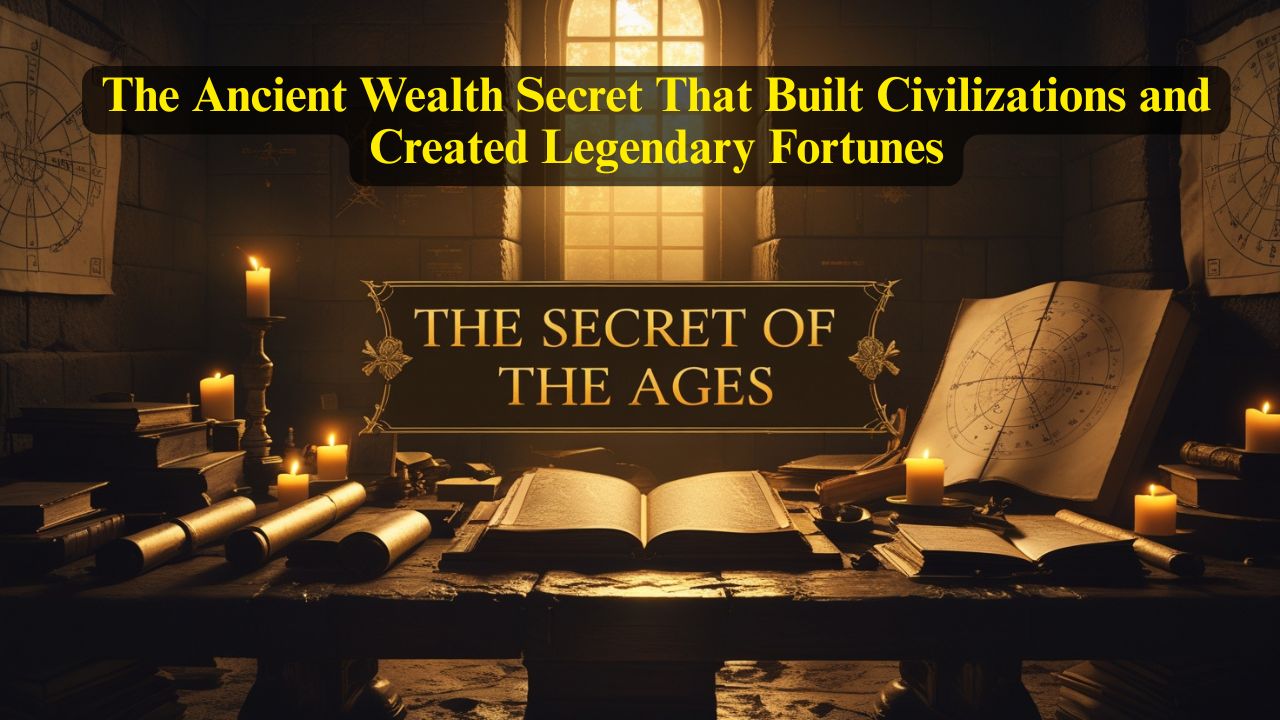
Wealth has long been misunderstood as merely the accumulation of money or material possessions. But true wealth—lasting, fulfilling, and ever-expanding—is born not from external circumstances but from internal mastery. This is the essence of The Secret of the Ages: that wealth creation begins in the mind, is nurtured by belief, and is brought into the world through disciplined action.
The Origin of All Wealth: Thought
Everything that exists in the material world began first as a thought. The great fortunes of industrialists, inventors, and philosophers all began as simple ideas—ideas born from imagination, shaped by belief, and expressed through unwavering commitment.
Thought is the seed of wealth.
And when planted in the fertile soil of focused belief, it grows into tangible prosperity.
Belief: The Catalyst of Wealth
Belief turns thought into power. Without belief, even the best ideas wither. Belief fuels persistence in the face of setbacks. It silences doubt. It creates an inner atmosphere where success becomes inevitable—not by chance, but by conscious design.
To create wealth, you must first believe that wealth is your right—not through entitlement, but through understanding universal law. The law that says: what you think consistently and believe deeply, you attract and manifest.
Clarity and Vision: Directing Your Mental Energy
Wealth flows toward clarity. Vague desires produce vague results. But when you set clear financial goals—backed by specific vision and emotional conviction—you engage a force greater than willpower alone.
Write it down. Picture it. Speak it aloud. Let your vision of wealth become a mental movie you play every day.
Action: The Bridge Between Thought and Wealth
While thought initiates wealth, and belief energizes it, action is the bridge that brings it into existence. No matter how strong your mindset, wealth requires movement. Strategy. Execution.
The secret of the ages does not promise wealth without effort. It promises that effort, directed by thought and belief, will bear fruit beyond what most dare to imagine.
Discipline and Persistence: The Wealth Multipliers
There will be obstacles. Doubt. Delay. Distractions. Those who fall short often do so not because they lacked opportunity—but because they lacked discipline and consistency.
Discipline turns fleeting motivation into lasting transformation. It’s what allows you to keep showing up when the results are slow, when the world doesn’t yet believe, and when your dream is still invisible.
Abundance is a Mental State
Wealth begins in the mind long before it appears in the bank. An abundant mindset looks for opportunity, not limitation. It sees potential, not problems. It expects value, not scarcity.
Cultivate gratitude. Celebrate progress. Reject comparison. Abundance is not something you acquire—it is something you tune into.
Old Examples of the Secret in Action
- Andrew Carnegie: A poor immigrant who visualized and believed in his ability to build an empire—eventually becoming one of the richest men in history.
- Benjamin Franklin: With no formal education, he applied discipline, thought, and principle to build wealth, influence, and a legacy of innovation.
- Thomas Edison: His inventions were not flashes of luck—they were the result of persistent thought, belief, and continuous action, despite thousands of failures.
- Florence Nightingale: Though not a conventional entrepreneur, she transformed healthcare through the power of clear vision and unrelenting purpose.
Practical Steps to Begin Creating Wealth
- Set a clear intention — What does wealth look like for you?
- Develop a belief system — Rewrite limiting thoughts into empowering ones.
- Visualize daily — Create mental pictures of success and live in that reality internally.
- Take daily action — No matter how small, momentum compounds.
- Track and refine — Review your results, adapt, and improve.
Conclusion: You Are the Source
The secret of the ages is not buried in ancient ruins or locked in secret vaults. It is within you. Your thoughts, your beliefs, your actions—they are the keys to wealth. And once mastered, no economy, no setback, no limitation can keep you from building a life of abundance.
The greatest riches of the world will flow to those who understand that the true gold is mined in the mind.
Discipline Over Desire
Discipline Over Desire: The Code of High Achievers
Desire wants it. Discipline does it.
Desire is loud. It burns bright, talks fast, and loves to dream. But desire alone doesn't achieve much. Every person has desires. Very few have the discipline to bring them to life.
That’s the difference between the average and the exceptional.
The high achievers—the people who build, create, and conquer—follow a different code. One that doesn't chase feelings. One that moves forward whether they feel like it or not.
It’s called Discipline Over Desire.
The Illusion of Motivation
We live in a world addicted to feeling motivated. We wait for the mood to strike. We scroll for inspiration. But high achievers don’t wait to feel ready. They act despite how they feel.
Discipline is about choice, not emotion.
It’s about showing up when desire fades. About doing the work after the spark is gone.
The Discipline Advantage
Desire wants results. Discipline focuses on process.
Desire dreams of outcomes. Discipline executes routines.
Desire sets goals. Discipline builds systems that make those goals inevitable.
That’s the code. Want less. Do more. Let action define you.
How High Achievers Apply It
1. They Build Routines—Not Rely on Mood
Their days are structured. Morning routines. Deep work blocks. Clear shutdown rituals.
“When I wake up, I write.” “After lunch, I train.” “Before bed, I plan.”
The behavior is automatic. Not optional.
2. They Make Boredom Their Superpower
Anyone can work when it’s fun. The disciplined work when it’s dull. They embrace repetition, refinement, and silence.
Where others check out, they lock in.
3. They Say No—Often
Discipline isn’t just about what you do. It’s about what you’re willing to walk away from.
Every yes is a no to something else.
High achievers are selective. Their energy is protected. Their focus is sacred.
The Real Reward
Discipline doesn’t just deliver external success. It builds internal strength.
It creates a deep confidence that can’t be faked—a self-respect that no achievement alone can provide.
It’s the feeling of knowing you can trust yourself.
Conclusion: The Code is Simple
Desire is noisy. Discipline is silent.
Desire craves comfort. Discipline walks through fire.
Desire hopes. Discipline finishes.
Follow the code. Choose discipline over desire. Every single time.
That’s what separates the watchers from the doers, the dabblers from the masters, the dreamers from the achievers.
Why Motivation Fails and Discipline Wins Every Time
Why Motivation Fails and Discipline Wins Every Time
Motivation is the spark. But discipline is the engine.
We all love the feeling of motivation—that surge of energy, that rush of inspiration that makes everything seem possible. But here’s the problem: motivation is unreliable. It’s emotional. It comes and goes. And if your goals rely on you “feeling like it,” you’re already in trouble.
Discipline doesn’t ask how you feel. It asks what you committed to.
When motivation fails—and it will—discipline is what keeps you moving. Let’s explore why discipline always outperforms motivation when it comes to achieving anything meaningful in life.
1. Motivation is a Visitor. Discipline is a Resident.
Motivation often shows up when things are exciting or new. But when things get hard, uncomfortable, or boring? Motivation vanishes.
Discipline shows up regardless.
Discipline is built on decisions, not emotions. It’s the inner agreement you made with yourself to follow through—even when it’s raining, even when you’re tired, even when no one is watching.
2. Motivation Chases Feelings. Discipline Builds Habits.
Motivation relies on momentum and mood. But moods shift. Habits don’t.
Discipline creates systems that remove willpower from the equation. You don’t need to feel inspired to brush your teeth—because it’s a habit. The same applies to your goals when discipline takes root.
The more automatic your actions, the less motivation you need.
3. Discipline Protects You from Excuses
Motivation is full of loopholes: “I’ll start tomorrow.” “I’m not in the mood.” “It’s not the right time.”
Discipline doesn’t negotiate. It removes the option to give up. It simplifies decisions: “This is what I do.”
And that consistency creates momentum, confidence, and results—even when the motivation is gone.
4. Motivation Peaks. Discipline Climbs.
Motivation feels like a high—it can come suddenly and powerfully. But that intensity doesn’t last.
Discipline builds slowly and steadily. It’s not dramatic. It’s dependable.
Every disciplined action is a brick laid. Over time, you build a fortress—strong, solid, unshakable.
5. Discipline Builds Self-Respect
There’s no greater confidence than keeping promises to yourself.
Motivation might make you feel good temporarily, but discipline creates long-term pride. It’s the source of genuine self-respect. Why? Because it proves to you that you can trust yourself to follow through.
That trust becomes power.
Final Thought: The Real Champion
Motivation is nice when it’s there. Use it when you have it. But never depend on it.
Because when life gets hard—and it will—it won’t be motivation that shows up at 5 AM. It won’t be motivation that makes the hard call or the tough choice.
It will be discipline.
And that’s why, every time, discipline wins.
How To Build Unbreakable Discipline - One Habit at a Time
How to Build Unbreakable Discipline — One Habit at a Time
Because success isn’t built in a day. It’s built daily.
Discipline isn't a trait you're born with. It's not reserved for the elite, the gifted, or the obsessively motivated.
Discipline is built—habit by habit, choice by choice, day by day. And the most powerful kind? The kind that doesn’t crack under pressure. The kind that becomes part of who you are.
In a world of instant gratification and scattered attention, building unbreakable discipline may seem impossible. But the truth is, it’s simple. Not easy—but simple.
It starts with one habit.
1. Understand This: Discipline is Identity in Action
Before we talk strategy, let’s get one thing straight: You don’t rise to the level of your goals—you fall to the strength of your habits.
Every disciplined action reinforces an identity. Every time you show up, even in a small way, you're casting a vote for the person you want to become.
Discipline isn’t about perfection. It’s about alignment.
When your actions match your values consistently, that’s where real discipline begins.
2. Shrink the Battlefield
Big goals are inspiring. But they can also overwhelm and paralyze.
- Want to get fit? Start with 10 pushups.
- Want to write a book? Start with one paragraph.
- Want to master your mornings? Start with waking up 15 minutes earlier.
Make the habit so small you can’t fail. Success loves simplicity. Especially at the beginning.
3. Stack It On What Already Exists
Discipline sticks when it fits into your existing rhythm.
This is called habit stacking.
Attach your new habit to something you already do every day.
- After brushing your teeth → write 1 sentence in your journal.
- After your morning coffee → plan your top 3 tasks for the day.
- After turning off your alarm → stretch for 60 seconds.
Small hooks. Big results.
4. Guard It Like It's Sacred
Treat your new habit like it’s non-negotiable—even if it only takes 2 minutes.
Don’t reason with yourself. Don’t debate it. Just do it.
Discipline grows in repetition, not in negotiation.
Create a rule: “This happens every day. No matter what.”
5. Track Progress Visually
You don’t need a fancy app or complicated system.
All you need is a wall calendar or a simple checklist.
Put an “X” for every day you show up.
The goal? Don’t break the chain.
Why it works: Visual momentum builds psychological momentum. And momentum fuels motivation.
6. Expect Resistance—Build Anyway
There will be days you don’t feel like it. Good. That’s when the work counts the most.
Discipline is forged in friction. It’s not built when it’s easy—it’s built when it’s easier not to.
The breakthrough isn’t found in doing more. It’s found in doing what you said you would—especially when it’s hard.
7. Let Habits Grow Before You Expand
Once the habit is rooted—meaning it feels automatic—you can grow it.
- 10 pushups become 20.
- 1 paragraph becomes 1 page.
- 5 minutes of focus becomes 25.
But don’t rush the process. Strengthen the root before growing the branches.
Final Thought: One Habit. One Brick. One Life.
Discipline isn’t built overnight. It’s built in the quiet, invisible moments when no one is watching.
It’s built when you choose to stay consistent instead of chasing perfect. When you show up for yourself—again and again and again.
So start now. Not with everything… but with one habit.
Build it. Repeat it. Protect it.
And watch what happens when that one habit becomes who you are.
7 Daily Disciplines That Transforms Your Life
7 Daily Disciplines That Transform Your Life
Because real success begins in the quiet moments no one sees.
Self-discipline isn't about punishment. It's about power.
The power to act with intention, to align your actions with your values, and to move steadily toward a life of purpose—even on days you don't feel like it.
But transformation doesn't come from occasional bursts of inspiration.
It comes from the daily disciplines—the habits and choices so small they often go unnoticed, yet so powerful they shape the entire direction of your life.
Here are seven daily disciplines that, practiced consistently, will reshape not only your days but your destiny.
1. Wake Up With Purpose
Start your day on your terms—not by reacting to alarms, messages, or chaos.
Discipline practice: Wake up at a set time and avoid your phone for the first 30 minutes.
Use that sacred time for clarity: stretch, hydrate, breathe, and ask yourself, "What matters today?"
Why it matters: The first moments of your day condition your mindset. Win the morning, win the day.
2. Master the Morning Ritual
A strong morning routine is a declaration: I am in control of how this day unfolds.
Discipline practice: Build a ritual that includes movement, mindset, and meaning.
Stretch or exercise, journal your thoughts, review your goals, or read something inspiring.
Why it matters: Rituals anchor your identity. They tell your brain: “This is who I am.”
3. Do the Hard Thing First
Avoidance is easy. Discipline is doing the most important task—especially when it’s uncomfortable.
Discipline practice: Identify your #1 priority the night before, and tackle it before anything else the next morning. No scrolling. No distractions.
Why it matters: The hard thing, done first, builds momentum and confidence that echoes through your entire day.
4. Respect Your Fuel
What you eat, how you move, and how you rest are not side notes—they're the foundation of all discipline.
Discipline practice: Hydrate early. Eat intentionally. Move your body daily—even if it's just a walk.
And protect your sleep like your future depends on it… because it does.
Why it matters: A disciplined body supports a disciplined mind.
5. Guard Your Focus Ruthlessly
Distraction is the enemy of progress.
Every moment stolen by a screen, a ping, or a meaningless task is energy you never get back.
Discipline practice: Use time blocks. Silence your notifications. Say no more often.
Create distraction-free zones where your most important work happens.
Why it matters: Focus isn’t just a skill—it’s a superpower in a world starving for attention.
6. Reflect and Reset Every Evening
Self-discipline isn’t just about effort—it’s about awareness.
Discipline practice: End each day with a 5-minute check-in.
Ask yourself: What did I do well today? What challenged me? What will I do differently tomorrow?
Why it matters: Reflection turns experience into growth. Without it, you repeat patterns instead of rewriting them.
7. Keep Promises to Yourself
Start small, but finish strong. When you say you’ll do something—do it.
Discipline practice: Make one clear promise to yourself each day. Write it down. Keep it.
Even if it’s small, even if no one sees. Especially if no one sees.
Why it matters: Every time you follow through, you strengthen trust in yourself—and that trust becomes unstoppable.
Final Thoughts
Discipline isn’t about being perfect.
It’s about showing up—especially when it’s hard, especially when no one’s watching.
These daily disciplines won’t just improve your productivity or mindset…
They’ll transform the way you live.
Because discipline is the bridge between who you are and who you’re becoming.
- Audio Articles
- Audio Articles 1
- Audio Articles 2
- Audio Articles 3
- Audio Articles 4

7 Daily Disciplines That Transform Your Life
The power to act with intention, to align your actions with your values, and to move steadily toward a life of purpose—even on days you don't feel like it.
Read Full Article
How to Build Unbreakable Discipline
Discipline is built—habit by habit, choice by choice, day by day. And the most powerful kind? The kind that doesn’t crack under pressure. The kind that becomes part of who you are.
Read Full Article
Why Motivation Fails And Discipline Wins Every Time
We all love the feeling of motivation—that surge of energy, that rush of inspiration that makes everything seem possible. But here’s the problem: motivation is unreliable. It’s emotional. It comes and goes. And if your goals rely on you “feeling like it,” you’re already in trouble.
Read Full Article
Discipline Over Desire
Desire is loud. It burns bright, talks fast, and loves to dream. But desire alone doesn't achieve much. Every person has desires. Very few have the discipline to bring them to life.
Read Full Article
The Science of Sticking
If you've ever tried to build a new habit, you've probably heard that it takes 21 days. This number gets thrown around so often that it feels like scientific fact.
Read Full Article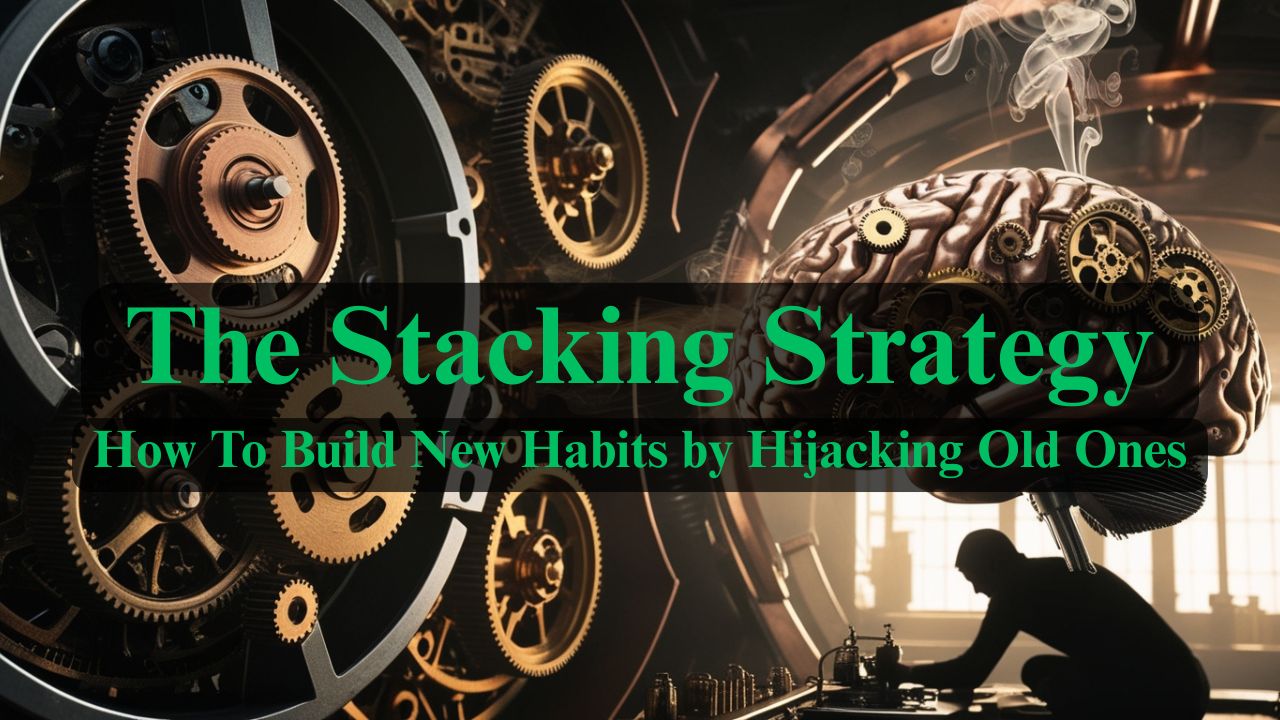
The Stacking Strategy
What if I told you that the habits you already have—even the ones you consider "bad"—could become the secret weapons for building the habits you want?
Read Full Article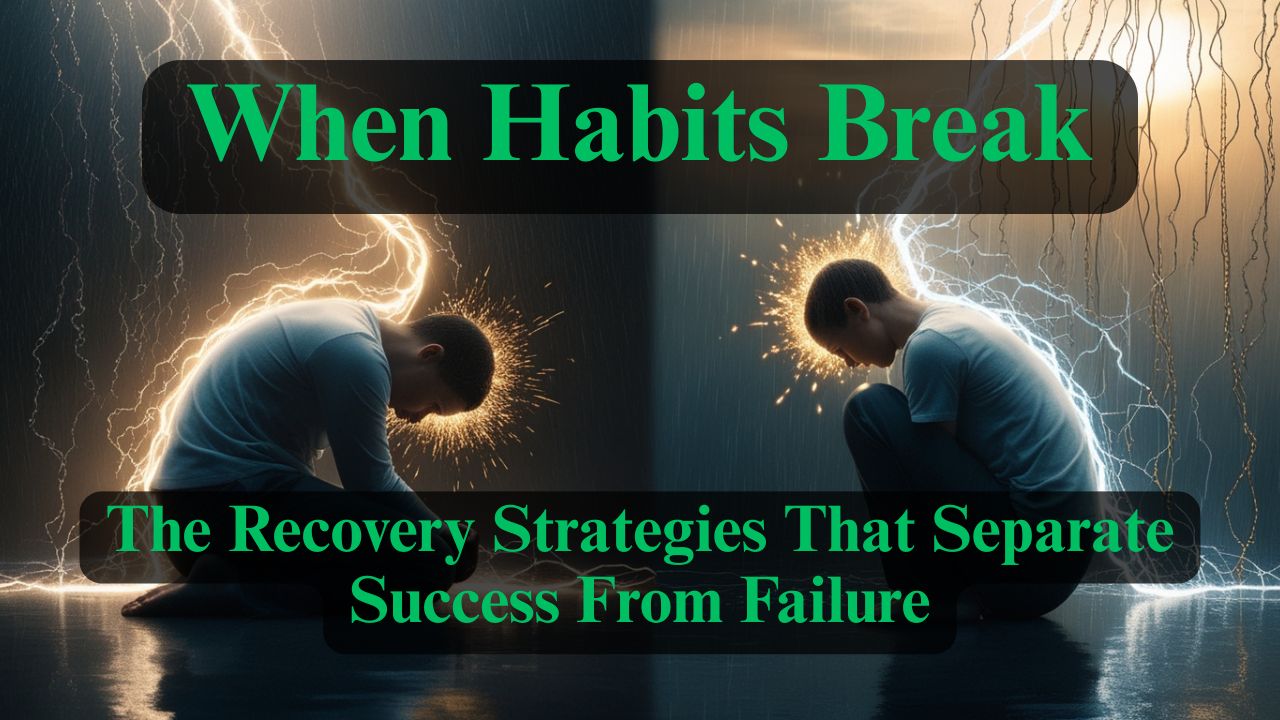
When Habits Fail - The Recovery Strategies That Separate Success From Failure
Here's what nobody tells you about building habits: you will fail. You'll miss days. You'll fall off track. You'll have weeks where everything falls apart.
Read Full Article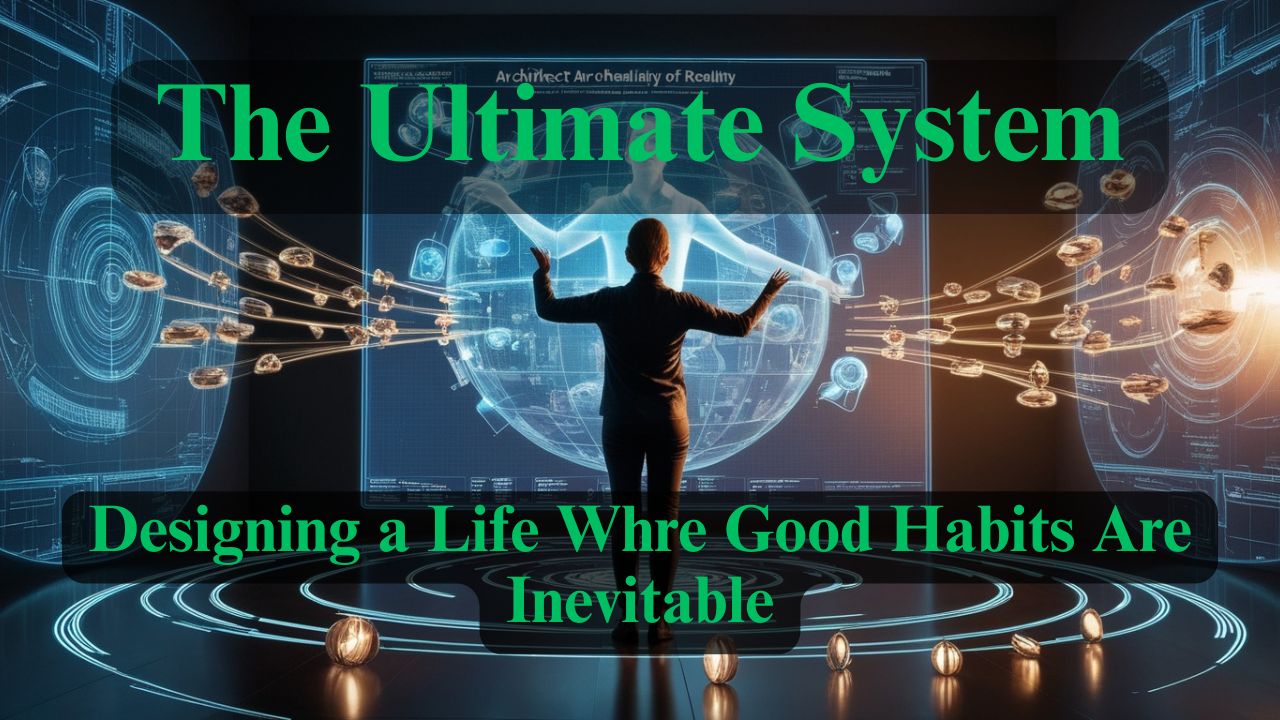
The Ultimate System - Designing a Life Where Good Habits Are Inevitable
You've learned to recognize habits, understand their formation timeline, stack them strategically, and recover from setbacks.
Read Full Article





